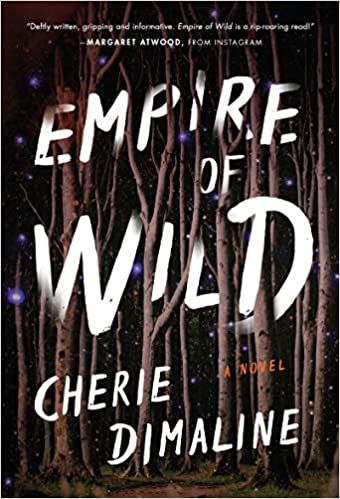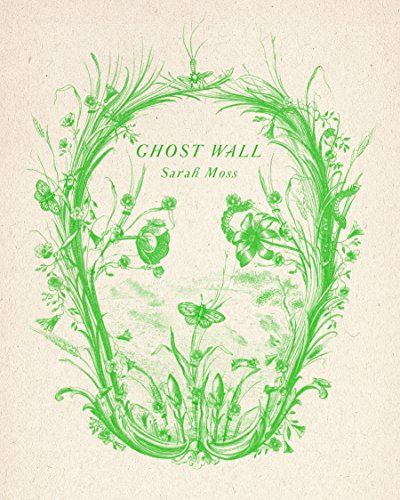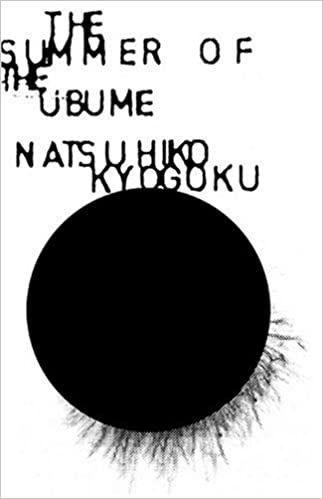
28 Must-Read Frightening Folk Horror Books
It’s the perfect time of year to pick up some folk horror books. It’s harvest time, spooky season, the days are shortening here in the Northern hemisphere. All are good reasons to dive into horror. The genre has recently been enjoying a boon, partially boosted by people seeking out books like Midsommar, the hit folk horror film. Midsommar was an original property, but plenty of other horror films are based on novels or short stories, like the cult classic folk horror Children of the Corn. But what exactly are folk horror books?
Understanding the Folk in Folk Horror Novels
People often conflate folklore with fairytales, but fairytales are only a small part of folk culture. Broadly stated, folklore is the expressive culture common to a group, typically generated in an organic, unofficial capacity. Fairytales are an element of folklore because there is no clear authorship on the stories; they belong to the people who share them.
The folk culture within folk horror often comes from groups of people in remote, rural settings. They have developed practices or rituals that wreak havoc on unsuspecting outsiders who happen upon them. The unruly power of nature is often also a key element of folk horror novels. Many classics of the genre—like the film The Wicker Man and the novel Harvest Home, set in remote Scotland and rural Connecticut, respectively—fit these themes.
Lots of culture has a mix of official and folk elements. Take religion, for example, which folk horror often interrogates. Catholicism is a religion with a large official structure and people whose jobs it is to govern the practice of it. The little shrines to Jesus and Mary that my grandmother and her friends made around their bingo cards? Those represent a folk practice within Catholicism. Now that might make a good horror novel premise…
Understanding the Horror in Folk Horror Novels
I’m always invested in analyzing what horror is trying to explore beyond its capacity to provide chills and thrills. Body horror, for example, is great for gross-outs, sure. But it’s also for thinking deeply about how existing in a body is an inescapable part of the human experience.
Folk horror is doing a different kind of work. In one way, it pushes back on the notion that rural living is idyllic. If you’re a city dweller who gets anxious when the population starts to thin, the folk horror sub-genre is there to validate that feeling.
These books also suggest the dangers of becoming too insular a group. We are horrified by unquestioning adherence to questionable practices that result from extreme isolation. A folk horror novel can also have an allegorical bent when the folk community stands in for, say American society. By this token, one can read Shirley Jackson’s influential folk horror story “The Lottery,” in which ritual human sacrifice allegedly ensures the prosperity of the rest of the group, as a critique of capital punishment.
Tthe Best Folk Horror Books
Whether you’re looking for deep meaning or abundant corn-based frights, folk horror is here for you. There are some books on this list hewing to the classic “outsider encountering a rural pagan death cult” trope. Still, I’ve listed a wide variety of stories, all blending folk culture and horror in fresh and terrifying ways.
Pine by Francine Toon
Reading folk horror often means traveling to all the remotest areas of Britain. Pine is set in the Scottish highlands. Lauren and her father Niall are missing part of their family, Lauren’s mother. On Halloween night, Niall picks up a strange woman in white on the side of the road, a trope from countless ghost stories and urban legends, and that’s only the start of the mysterious occurrences.
Empire of Wild by Cherie Dimaline
In this novel, set among the Métis community in Ontario, Canada, a woman searching for her missing husband seems to have found him, or his doppelgänger. He’s now going by Revered Wolff and preaching the Christian gospel in a revival tent. The Métis story of the Rogarou, a werewolf-like creature, is the basis for this novel.
Wylding Hall by Elizabeth Hand
This book is what happens when Daisy Jones and the Six has a baby with House of Leaves in rural England. Told in an interview transcript style, this novel features a fictional folk band holed up in the titular hall to record an album. Then the lead singer goes missing. This short horror gem definitely has a gothic haunted house vibe, but the way the story incorporates folk ballads and obscure English Christmas traditions ups the folk horror factor.
The Lamb Will Slaughter the Lion by Margaret Killjoy
This novella introduces Danielle Cain, a queer punk rock traveller venturing to a squatter utopia in Iowa, to investigate her friend’s mysterious death. It turns out even off-the-grid anarchists sometimes summon murderous stag demons who turn on them. This book also has a sequel featuring Danielle Cain wielding her newfound demon-hunting skills.
The Only Good Indians by Stephen Graham Jones
I’ve written before how thought-provoking this novel is. Simply put, it’s about a supernatural entity seeking revenge against four Native American men for a misdeed they were all party to years ago. This book is slippery within the folk horror sub-genre, because it begins with a haunted house. By the end, however, an unruly and unforgiving embodiment of nature, a folk horror hallmark, rampages on full display.

The Changeling by Victor LaValle
This horror novel takes its folklore elements to the most urban possible setting, New York City. Still, when the main character Apollo goes in search of the truth of what happened to his wife and child, we will see that even someplace as populated as New York has forgotten islands, forests, and secret graveyards. The novel explores the familiar myth of the changeling, an otherworldly creature swapped out for a human baby.

Through the Woods by Emily Carroll
If you’re looking for folk horror comics, Through the Woods is an excellent choice. It’s a compilation of five macabre horror stories. It definitely blends the folk horror sub-genre with body horror, because I was seriously frightened by the way the author draws teeth.
Ghost Wall by Sarah Moss
If you’ve read The Secret History, you know that reenacting ancient practices you’ve read about can have deadly consequences. Ghost Wall’s premise is also rooted in academia, specifically an anthropological course in which a family lives as ancient Britons did in the North of England. Does foraging for food and building structures to ward off invaders invariably lead to human sacrifice?
Water Ghosts by Shawna Yang Ryan
Water Ghosts is a reimagining of a Chinese ghost story set in a small farming town in California in 1928. Three bedraggled women appear out of the fog, disrupting the townsfolk and becoming intertwined with their lives. This dreamy folk horror shows how people can be haunted by their passions and betrayals.

The Twisted Ones by T. Kingfisher
If watching a regular episode of Hoarders gives you the creeps, wait until you read The Twisted Ones. When Mouse goes to rural North Carolina to clean out her deceased, hoarder grandmother’s home, she finds a journal. It details the horrifying things that live in the woods just outside, beings that seem purely mythical, until they aren’t.
Experimental Film by Gemma Files
Where many folk horror novels involve outsiders traveling to remote, insular communities, Experimental Film has a found footage angle instead. A Canadian film historian uncovers a lost early 20th century filmmaker, whose films depict the Slavic folk character Lady Midday, a demon who comes out at noon.
White is for Witching by Helen Oyeyemi
This is a folk horror novel for readers who are open to atmospheric horror that isn’t neat or tightly plotted. It’s a haunted house story, set near the cliffs of Dover. The house itself as a narrator at times, and the book has that fairytale feeling without being an outright retelling or reimagining. One of the characters in this novel suffers from pica, the disorder involving eating non-nutritive substances.
When We Were Animals by Joshua Gaylord
This is an offbeat book I wish more people would read. It’s not a typical folk horror novel; it’s more like the aftermath of one. Mostly told in retrospect, it’s about a woman’s reflection on her youth in a rural Midwestern town where teenagers undergo an animalistic transition period before adulthood. If you’ve ever marveled that something you thought was normal about your childhood was in fact quite strange, this book takes that premise to the extreme.

Her Body and Other Parties by Carmen Maria Machado
Carmen Maria Machado’s writing is very influenced by horror and is often at the nexus of body horror and folk horror. This book of short stories includes the standout “The Husband Stitch,” which recounts a woman’s treatment during childbirth mixed with the folktale of the girl with the green ribbon around her neck.

The Whisper Man by Alex North
The Whisper Man is the most contemporary kind of folk horror novel, building on urban legends, our modern version of fairytales. A serial killer from 20 years ago was nicknamed “The Whisper Man” for whispering in the windows of his victims. Enter Jake, a child and a newcomer to the town, who hears whispers at his own window.

Hex by Thomas Olde Heuvelt
In the quaint Hudson Valley town of Black Spring, there’s a 17th century witch just wandering into people’s houses. Her eyes and mouth are sewn shut, and she stands by people’s beds. The town tries to keep knowledge of their curse under wraps, but the teens want to make their local witch go viral. I’m still not brave enough to read this one, because the premise is so viscerally terrifying to me, someone who regularly experiences the real-life horror of sleep paralysis.

Pedro Páramo by Juan Rulfo
Pedro Páramo is considered a classic of Mexican literature and an early example of magical realism, but it also has folk horror elements. Juan Preciado, the main character, travels to his deceased mother’s hometown seeking his father and instead finds an actual ghost town. The novel is tied to folk culture and in particular oral storytelling.
Wakenhyrst by Michelle Paver
Wakenhyrst is an Edwardian gothic horror novel tinged with folk horror elements. The novel is set at Wake’s End, a large manor house in East Anglia that borders a bleak fen from which terrible things might be emanating. It highlights the way old Christian practices and folk practices can blend.
The Summer of the Ubume by Natsuhiko Kyogoku
The title refers to an ubume, a ghost that arises from the burial of a pregnant woman in Japanese folklore. If a mystery novel with folklore-inspired horror is what you’re after, here’s your book. The tale is narrated by a tabloid reporter who is investigating a story of a woman who’s been pregnant for 20 months with no end in sight. He also calls in his exorcist friend to help with the case.
The Gallows Pole by Benjamin Myers
Folk horror often involves contemporary characters happening upon a setting that seems anachronistic, but The Gallows Pole is a fully historical folk horror novel, set in the late 18th century. In it, a charismatic leader assembles a group to build a criminal coin-forging empire in his remote moorland home. He is also visited by visions of stag-headed men. Real history underpins the coin forging. But the stag-headed men? Who can say.

Lanny by Max Porter
This is a good book for people looking to be only mildly creeped out. The title character, a boy named Lanny, moves to a village 60 miles outside of London. There he learns of the local bogeyman character drawn by schoolchildren. This novel was longlisted for the Booker Prize in 2019, but that isn’t why I chose it for this list. I chose it because the bogeyman character’s name is Dead Papa Toothwort, and as if that weren’t enough, he narrates part of the novel.
Little Darlings by Melanie Golding
This novel is another take on changeling folklore, in which Lauren, a new mother to twins, swears she saw a woman take her babies and replace them with different creatures. Of course, no one believes her, and then another strange incident occurs. She becomes determined to bring her true infant sons home. The novel is steeped in dark fairytales throughout.

The Merry Spinster: Tales of Everyday Horror by Daniel M. Lavery
Daniel Lavery’s short story collection is the blend of horror and fairytales you are looking for. There are nightmare-inducing retellings of The Little Mermaid, The Frog Princess, Beauty and the Beast, and The Velveteen Rabbit (not technically a folk tale as it has an author). All are imbued with Lavery’s hyperliterate, clever prose stylings.
The Day the Sun Died by Yan Lianke
The Day the Sun Died is a great example of folk horror being used for allegorical purposes, in this case to question the optimism of the “Chinese Dream”—a counterpart to the so-called “American Dream”—outlined by president Xi Jingping. In this novel all the residents of a village deep in the mountains begin sleepwalking, or “dreamwalking,” consuming the village in violence and chaos.
Swansong by Kerry Andrew
Another novel set in the Scottish Highlands, this one has a shifting sense of reality and magic. In it, a woman comes to the Highlands to escape what happened to her in London. She is visited by floating white shapes on the loch and in the woods. When she comes across someone tearing apart a bird in the woods, she needs to know his secret.

The Essex Serpent by Sarah Perry
Birds and deer are the animals that seem to be featured most commonly in folk horror novels. The Essex Serpent, a historical novel, features the return of a Loch Ness monster-like creature who gets blamed for mysterious deaths and disappearances. This book is not terrifying, with more flair for gothic melodrama (that is not a complaint!). It also investigates the rift between science and religion.
Taaqtumi: An Anthology of Arctic Horror Stories by Aviaq Johnston, Richard Van Camp, Rachel Qitsualik-Tinsley, Sean Qitsualik-Tinsley, Anguti Johnston
The title of this anthology is an Inuktitut word that means “in the dark,” so if you are afraid of the dark, this is the book for you. Not all the stories in this book would be categorized as folk horror—it dips into post-apocalyptic horror and body horror as well—but a giant walrus god does await you in one of the tales.

The Rakess by Scarlett Peckham
Okay, this last one is a romance novel, but hear me out. It’s set in a rickety, gothic manor in Cornwall in the late 18th century, and features a woman who is facing harsh treatment for writing feminist tracts, including folk horror-esque threats. If you’re a real scaredy cat who wants a dark romance inflected with the faintest tinge of folk horror, you’ll get a guaranteed happy ending with this one.
Need more folk horror novels?
This list is only the tip of the folk horror iceberg. Whatever horror sub-genre, fright level, or mythology you’re looking to read, Tailored Book Recommendations can help find the exact book to fit your needs. Check TBR out today!




































